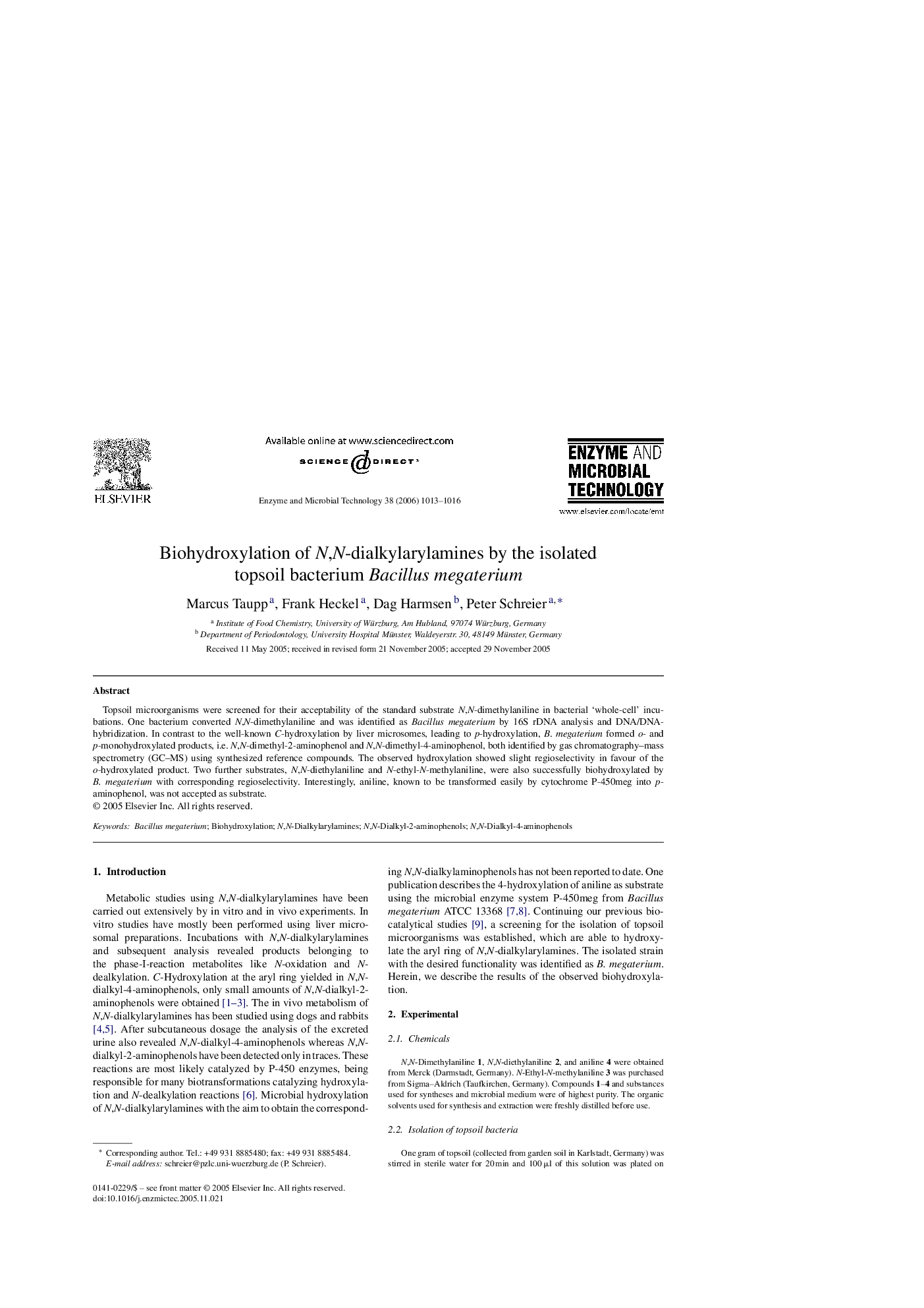| Article ID | Journal | Published Year | Pages | File Type |
|---|---|---|---|---|
| 18705 | Enzyme and Microbial Technology | 2006 | 4 Pages |
Topsoil microorganisms were screened for their acceptability of the standard substrate N,N-dimethylaniline in bacterial ‘whole-cell’ incubations. One bacterium converted N,N-dimethylaniline and was identified as Bacillus megaterium by 16S rDNA analysis and DNA/DNA-hybridization. In contrast to the well-known C-hydroxylation by liver microsomes, leading to p-hydroxylation, B. megaterium formed o- and p-monohydroxylated products, i.e. N,N-dimethyl-2-aminophenol and N,N-dimethyl-4-aminophenol, both identified by gas chromatography–mass spectrometry (GC–MS) using synthesized reference compounds. The observed hydroxylation showed slight regioselectivity in favour of the o-hydroxylated product. Two further substrates, N,N-diethylaniline and N-ethyl-N-methylaniline, were also successfully biohydroxylated by B. megaterium with corresponding regioselectivity. Interestingly, aniline, known to be transformed easily by cytochrome P-450meg into p-aminophenol, was not accepted as substrate.
